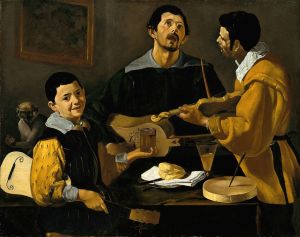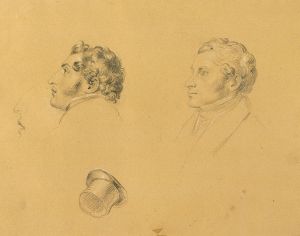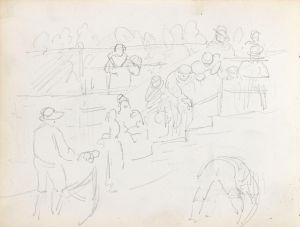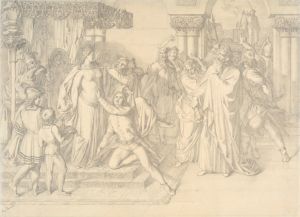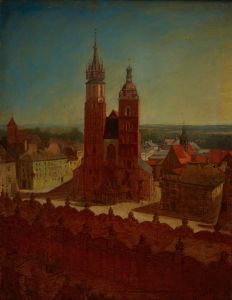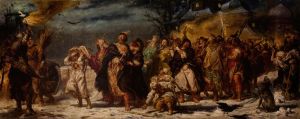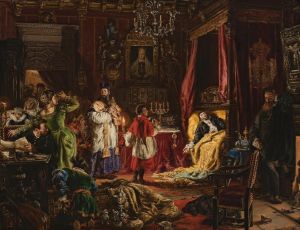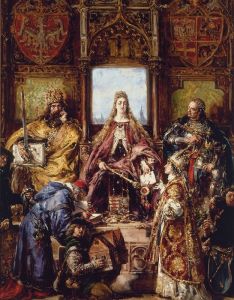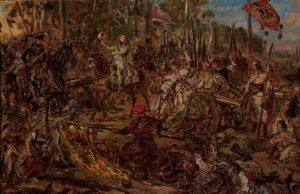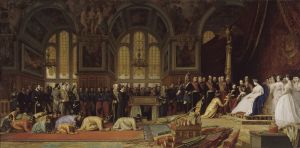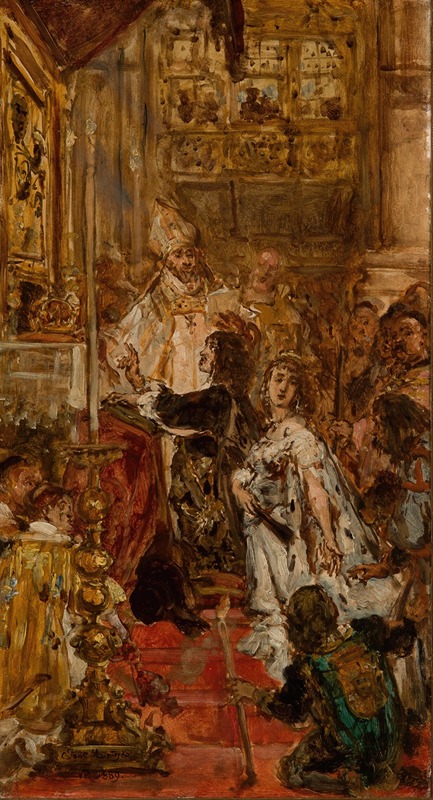
Śluby Jana Kazimierza
A hand-painted replica of Jan Matejko’s masterpiece Śluby Jana Kazimierza, meticulously crafted by professional artists to capture the true essence of the original. Each piece is created with museum-quality canvas and rare mineral pigments, carefully painted by experienced artists with delicate brushstrokes and rich, layered colors to perfectly recreate the texture of the original artwork. Unlike machine-printed reproductions, this hand-painted version brings the painting to life, infused with the artist’s emotions and skill in every stroke. Whether for personal collection or home decoration, it instantly elevates the artistic atmosphere of any space.
Jan Matejko's painting "Śluby Jana Kazimierza" (The Vows of Jan Kazimierz) is a significant work of art that captures a pivotal moment in Polish history. Created in 1893, this painting reflects Matejko's dedication to illustrating key events and figures from Poland's past, a theme prevalent throughout his oeuvre.
The painting depicts the historical event of King Jan II Kazimierz of Poland making a solemn vow in the Lwów Cathedral (now Lviv, Ukraine) on April 1, 1656. This vow was made during the Swedish invasion of Poland, known as the Deluge, which was part of the larger conflict of the Second Northern War. At this time, Poland was under severe threat, with much of its territory occupied by Swedish forces. The vow was a plea for divine intervention and a promise to improve the conditions of the peasantry and to protect the Catholic faith in Poland.
Matejko's work is renowned for its attention to historical detail and its ability to convey the gravity of the moment. In the painting, King Jan Kazimierz is depicted kneeling before the altar, surrounded by clergy and nobility. The composition is rich with symbolism, reflecting the religious and political significance of the event. The king's posture and expression convey a sense of humility and desperation, underscoring the dire circumstances faced by the Polish-Lithuanian Commonwealth at the time.
The setting of the painting is the interior of the Lwów Cathedral, which Matejko rendered with meticulous detail. The cathedral's architecture and religious iconography are faithfully represented, providing a backdrop that enhances the solemnity of the scene. The figures surrounding the king are portrayed with individualized features, suggesting Matejko's intent to capture the likenesses of historical figures present at the event.
Matejko's "Śluby Jana Kazimierza" is more than just a historical record; it is a work that reflects the artist's deep sense of nationalism and his desire to inspire pride in Poland's history. Through his art, Matejko sought to remind his contemporaries of the resilience and faith that characterized Poland during times of crisis. This painting, like many of Matejko's works, serves as a visual narrative that educates and engages viewers with Poland's rich historical legacy.
The painting is housed in the collection of the National Museum in Wrocław, Poland. It remains an important piece for both its artistic merit and its historical significance, continuing to be a subject of study and admiration. Matejko's ability to blend historical accuracy with artistic expression ensures that "Śluby Jana Kazimierza" remains a vital part of Poland's cultural heritage.





